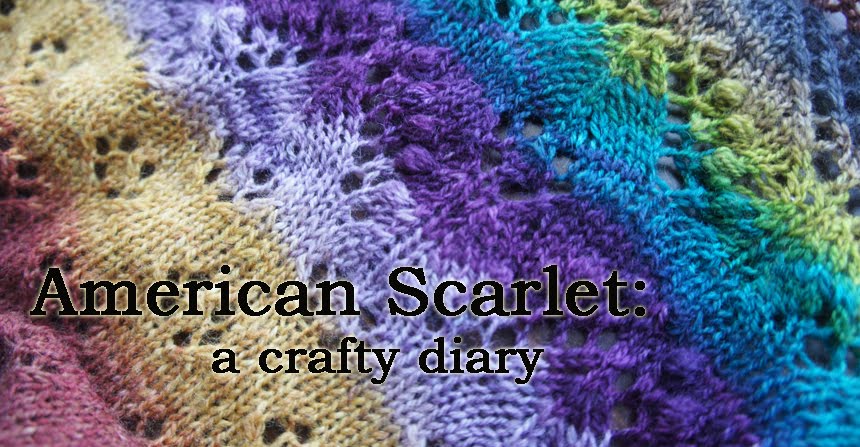 |
Yes, I actually own these shoes. My mother
bought them for herself, and somehow I ended
up being the proud owner. She also lamented
the fact that they're not appropriate footwear
for work in America. Yes, I'm going to pipet in
club heels... |
Every time I want to wear a skirt in the winter, the biggest problem is worrying that I will freeze my butt off. Literally. Admittedly, living in San Francisco isn't as cold as some places, but it gets pretty damn cold. So I've wanted to make a pair of knitted shorts for a while, to wear under skirts in cold weather, and a couple of weeks ago, I finally got around to doing that.
There aren't a lot of patterns out there for knitted shorts. The one I liked best was
this pattern to base mine on. But, seeing that I had a completely different yarn weight, and wanted to have a slightly different shape, I actually ended up modifying it quite a bit.
How to make some of your very own? Well...
You'll need
- 200 grams of yarn, with a gauge of ~34 sts to 10 cm; I used Cascade Yarns Venezia - it's 70% Merino and 30% silk; 'nuff said.
- size 7 circular needles
- various bits of waste yarn for stitch holding
- ribbon and beads for waistband
- fine weight yarn for ruffles (optional)
I used my mom's interchangeable circular needle kit, which worked out really well when I needed to switch between knitting waist and legs.

These were made for about 74 cm waist and 97 cm hips
BODY
Cast on 210 sts and knit in 1x1 rib for 11 cm (~26 rounds)
After this start expanding to 226 sts: add 4 sts evenly every 4 rounds, by knitting 2 through 1; make sure to follow the pattern of the rib to make it blend in
I knitted the body for a total length of 20 cm, and the shorts sit somewhere in the vicinity of my upper hips. If you want them to sit higher (such as on your waist), knit an extra 4-5 cm.
Split the stitches on yarn holders as follows: leg (45 sts), crotch (21 sts), other leg (45 sts); put the back (115 sts) on straight needles.
Continue the rib stitch back and forth over the back as follows:
- knit a full row; when you turn over, knit the first 7 stitches and put them onto the leg stitch holder (you will not touch these again for now),
- then continue the row; when you get to the end, turn over, knit the first 7 stitches, and put them on the other holder, then finish the row (minus those first 7 stitches, of course). Each row should be 7 stitches shorter than the previous.
- Do this 8 times (59 sts left);
- the next two rows, take away 8 sts each;
- the two following rows, take away 11 sts. You should be left with 21 sts. (If not, fidget with your numbers to make it so)
Bind off these 21 sts. Do not bother with the Kitchener st as described in the original pattern. It comes out hideous in rib knit (or at least the way I did it...)
CROTCH
Put the 21 crotch sts from the holder onto the needles and rib back and forth until you have ~11 cm. I actually added 1 st on each edge (=23), so I could do neat edging,* then right before I finished, I knitted 2 together on each edge to take them away again. (*By that I mean, take off the first st and purl the last st of every row).
Bind off these 21 sts and sew together with the leftover 21 sts from back.
LEGS
Put the sts from one leg holder onto a short circular needle, and pick up 30 sts along crotch edge for a total of 122 beautiful leg sts. Knit in the round in rib until the leg is as long as you want it (or as long as you still have yarn).
To finish, you can bind off loosely in rib. Or, you can add glorious ruffles, like mine:
Knit all sts of the last row (no more rib!). Switch to a fine weight yarn, but keep the same gauge needles. Mine is a mystery yarn that came from a sweater.
{Knit one round; Next round: knit 1, yarn over - all around}x3
This will exponentially increase your sts from 122 to 488. I hope you have patience.
Knit one last row, then bind off.
Add a longish ribbon around the waist (just pull it in and out in between stitches at regular intervals).
Ta-da!






















